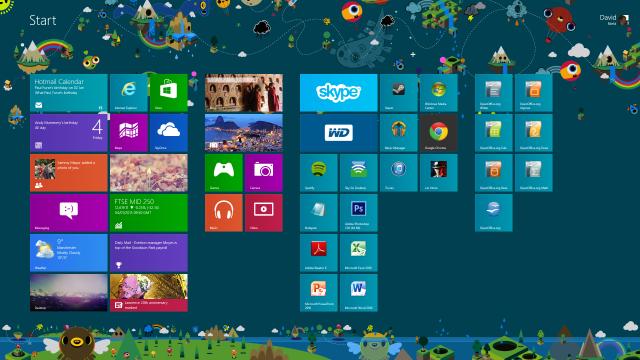Windows 8 can take some getting used to. While the desktop app works very much like Windows 7, there are plenty of new shortcuts, options, and tricks built into the operating system. Think you know how to use it like a pro? Here are a few Windows 8 features that you probably haven’t found yet.
1. The Secret Start Menu
Microsoft has replaced the old Start orb with an animated, tiled page of apps, but there’s still a Start menu of sorts in place — right-click in the lower left-hand corner of the screen to bring up a menu of quick links to the Control Panel, Task Manager, programs list and other key areas of the system. From here you can search for files, launch the Run box, open the File Explorer and more.
2. Automatic Backups
New in Windows 8 is File History, which works in a similar way to Apple’s Time Machine technology, automatically logging older versions of your files that you can restore as and when required. The feature isn’t enabled by default though, so you’ll need to open up the System and Security screen in Control Panel to get it up and running. You’ll also need a second hard drive on hand — whether internal, external or networked — to save your file version history too. Once everything is set up, it works automatically, and can prove a lifesaver if you lose your holiday photos or a week’s worth of work.
3. Mix Metro And The Desktop
Windows 7 allowed you to snap windows to the sides of your screen, but Windows 8 goes further — Metro-style Start page apps (like People and Weather) can be docked to the left or right edge of the display, and they will switch to a special mini mode at the same time. This means you can check on the forecast while working in Photoshop, or keep an eye on your Twitter feed while crunching some numbers in Excel. Click and drag the top of any Windows 8 app to the side of the screen to dock it, then drag out the black border bar to restore the full-screen view. It’s also possible to have two Metro Windows 8 apps show at once.
4. Sync Everywhere
If you’ve just upgraded to Windows 8, then you might still be using your old user accounts — and you may not realise the features available with the new Windows IDs. Sign in with this ID (it’s the same one you use for MIcrosoft services like SkyDrive and Hotmail/Outlook.com). It will make syncing emails and photos easier and it will transfer your Windows 8 settings and preferences instantly to any other location you sign in from.
If you have Windows 8 machines in the home and in the office, for example, then this is a quick and painless way of keeping your preferences, desktop wallpaper, Internet bookmarks and other data consistent across machines. You can also specify what is and what isn’t synced in the Windows 8 settings, if you want to keep your personalisations without syncing your passwords.
5. Take The Shortcuts
The Snipping Tool introduced in Windows 7 is still present in Windows 8, but there’s an even easier way to get a screenshot of your display — hit the Windows button and PrtScrn at the same time to save a PNG screengrab to a Screenshots folder in the Pictures library. Press Win+C to bring up the Windows 8 Charms. Use Win+X to display the secret Start menu we mentioned earlier. Hit Win+D to switch to the desktop app from anywhere else in Windows 8.
If you’re using a full-screen Windows 8 app, right-clicking the mouse brings up the app’s menu, or if you’re on the Start page a link to all the software on your system. Left-click in the lower right-hand corner of the Start page to arrange your tiles and apps into columns. Those are my favourite shortcuts — Kyle shares several others in his Windows 8 survival guide.
6. The Easy Reinstall
Reinstalling Windows used to involve messing around with product keys, DVDs and backups. It could take up half your day. Windows 8 streamlines the whole process, which can be completed with just a few mouse clicks.
Head to the Change PC Settings link from the Settings charm. Under the General tab, you’ll find you can “Refresh your PC” or “Remove everything.” Use the first option to restore Windows to its factory setting while leaving your personal documents, files and personalisations intact. If Windows is running sluggishly, or there’s a problem with the OS settings, or something has gone wrong with your hardware/software setup, then this is the choice to go for.
The second option performs a full reinstall, clearing out all your files and wiping the hard drive (so you’ll need to make sure you have everything backed up). Use this when you have a serious problem with Windows (such as a virus or a ton of spyware) or when you’re putting your PC up for sale on eBay and need to get back to square one.
Do you have your own tips to share? Let us know!
